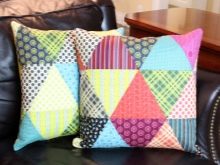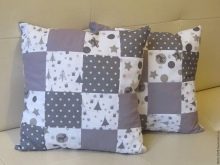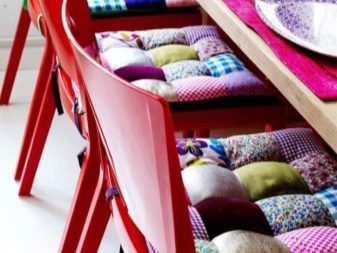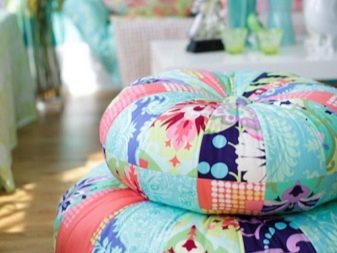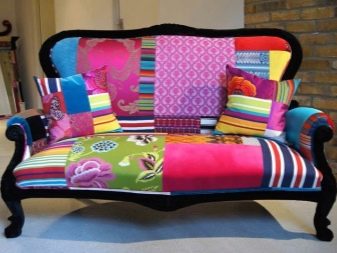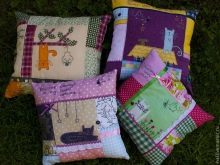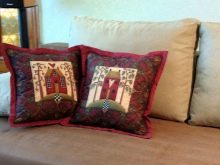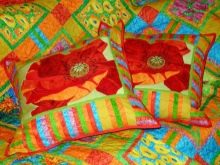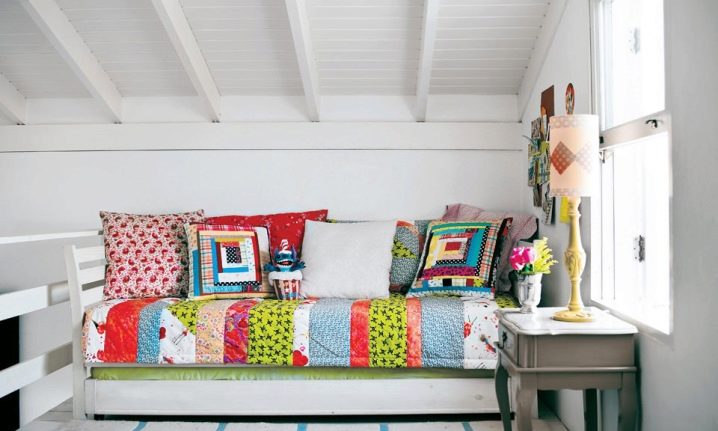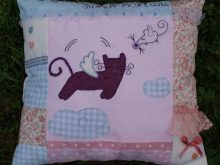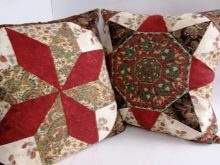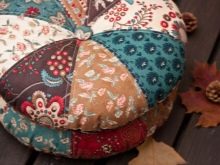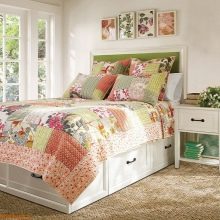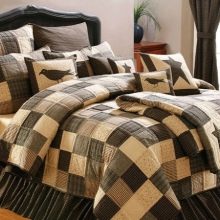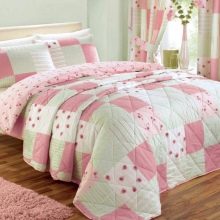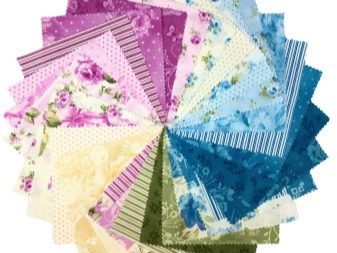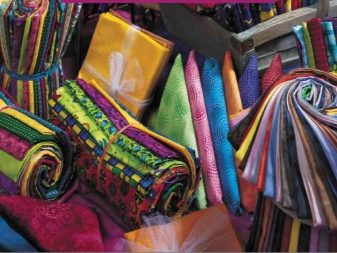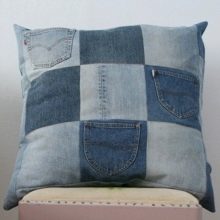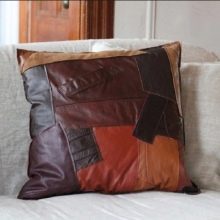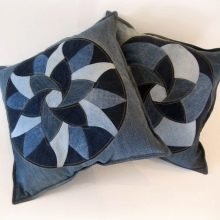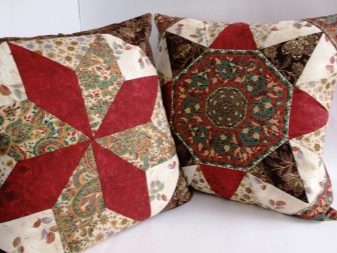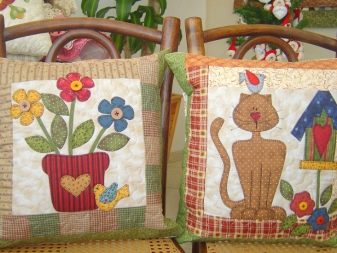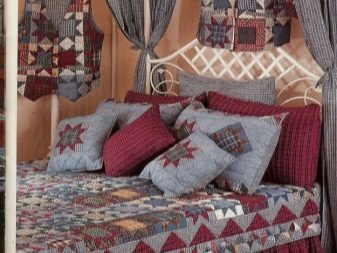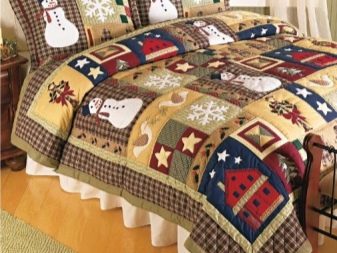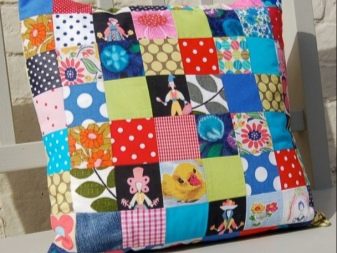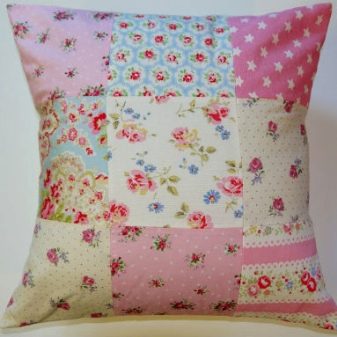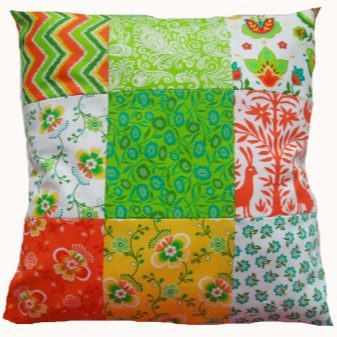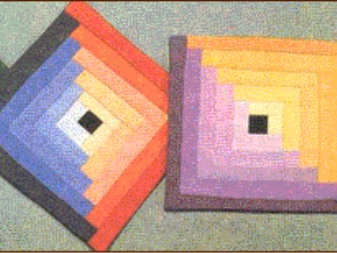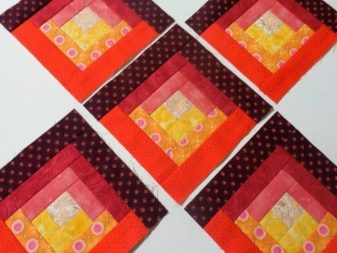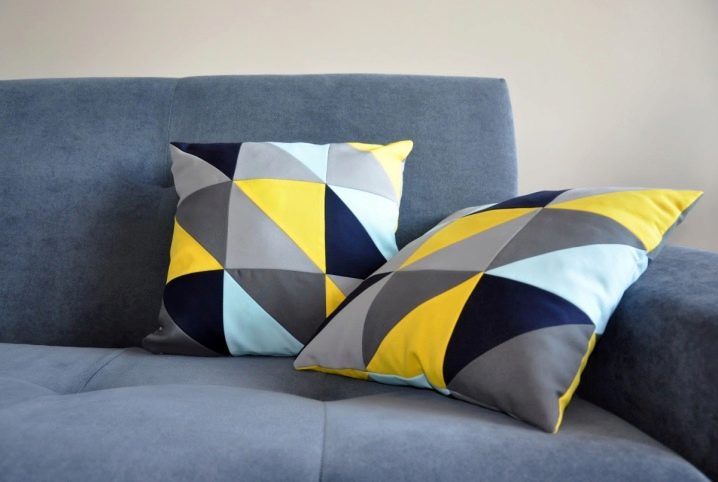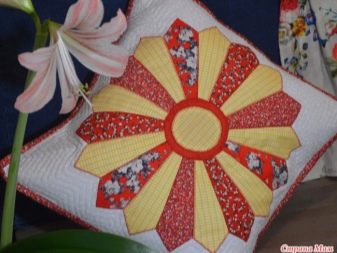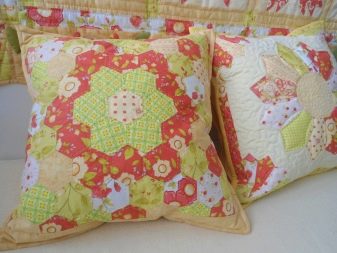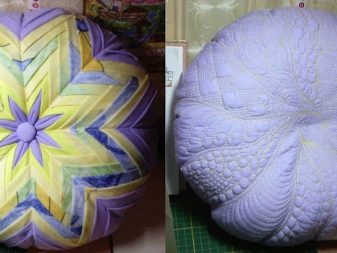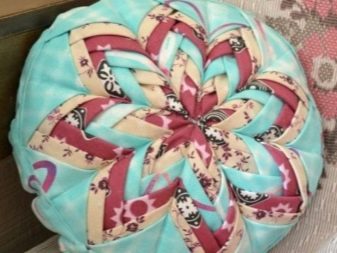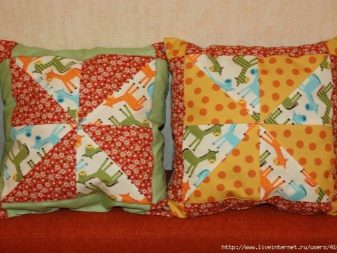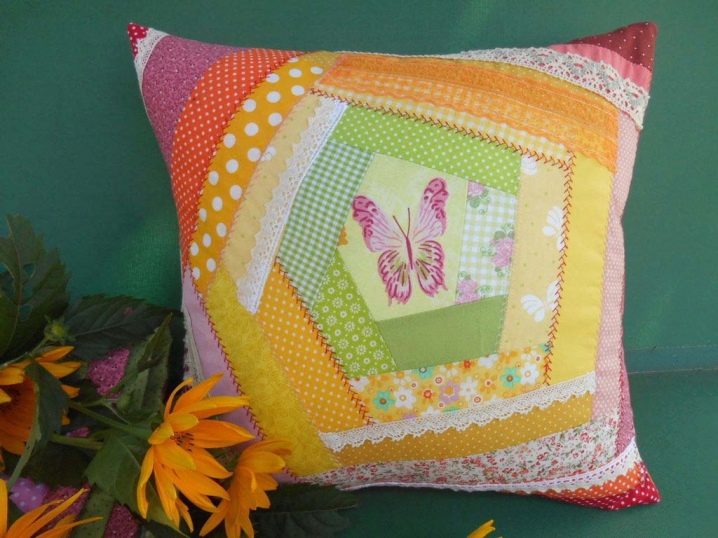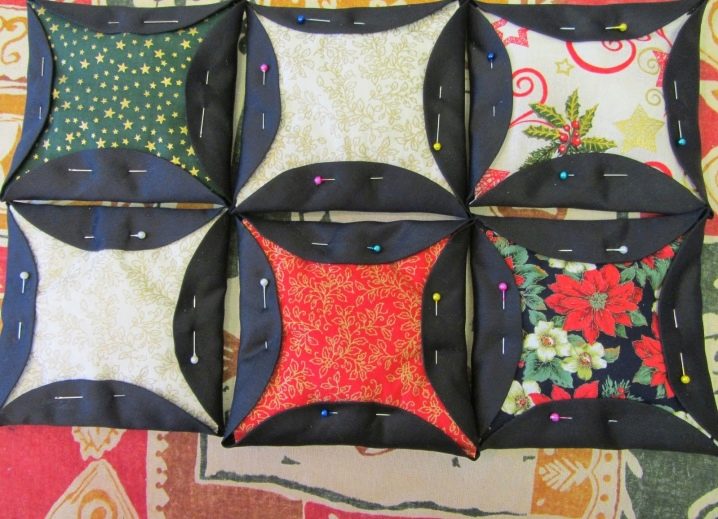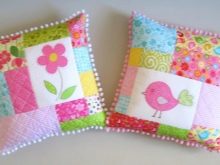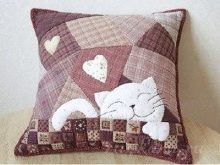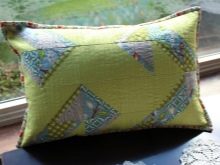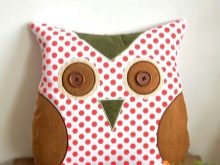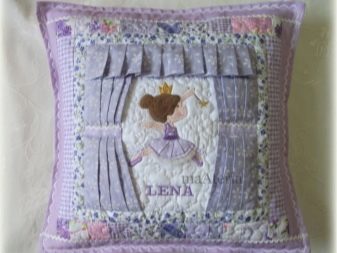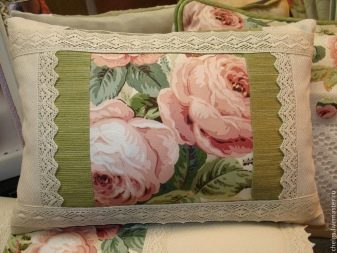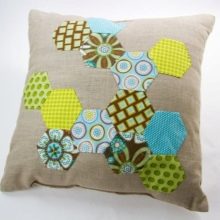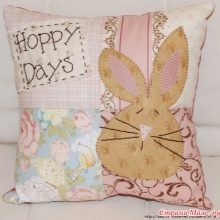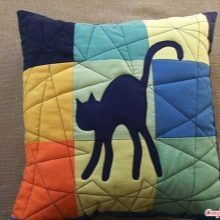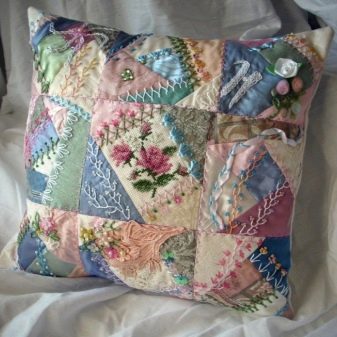Patchwork Pillows
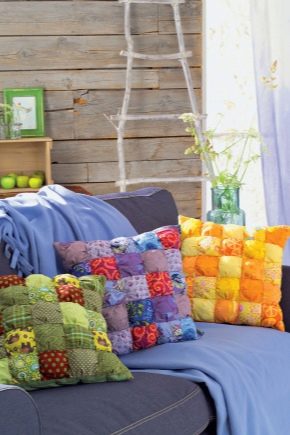
Modern interior design is multifaceted. A sea of ideas, a flight of fantasy allow you to fit into the style of the most unusual objects. However, no matter how generous the store assortment was, the hand-made product is always unique and is a highlight of the style. Take at least accessories such as pillows in the style of “Patchwork”: a technique that has bypassed the whole world and has a lot of techniques has been known for a long time, today it is the center of attention.
Features, Pros and Cons
Pillows in the style of “Patchwork” or simply “patchwork” pillows are decorative accessories from patches of various shapes and sizes, scraps of different fabrics. It is painstaking work to create a product with a specific pattern of varying degrees of complexity.The technique is old, its appearance was associated with a lack of textiles, so each piece of work had value in the work.
Over time, the chaotic selection of patches was replaced by the correct layout, taking into account the color gamut and a certain theme. Today, special attention is paid to needlework, so in the shops you can buy not only ready-made kits in the same style, but also the “right” blanks, be it individual square elements or ready-made sets with cut fragments.
Pillows from patches have many advantages:
- may dictate the idea of design or be the support of a particular piece of furniture;
- are self-sufficient accents or are performed in a set with a bedspread, rug, blanket, capes on upholstered furniture;
- made on a sewing machine, therefore, are tough and durable;
- can be located anywhere in the room, decorating the surface of furniture (sofas, armchairs, chairs, stools) or window sills;
- have a wide size range and variability of the form;
- they are distinguished by a variety of carved fragments and a rich choice of color palette;
- look professional and bright, obeying the rules for the selection of texture of the material;
- made of textiles of natural and synthetic origin;
- they are divided into several techniques of drawing performance, gathering according to a previously prepared scheme;
- made in the form of full-fledged pillows or as decorative pillowcases for the size of the available pillows, given the ease of care (may have a zipper in the form of a zipper or buttons with loops);
- they can combine various handicraft techniques (for example, classics and Japanese patchwork kinusayga, iris folding, etc.);
- they are a favorite theme of needlework by experienced craftswomen and inspire newcomers to work;
- recognized as an excellent gift for yourself or close to the celebration;
- no capricious care, allow machine wash at a temperature of 40 degrees, easy spin and dry naturally;
- depending on the pattern and color range, they are able to create a visual illusion of increasing the space of the room;
- create a feeling of home comfort, maintaining a relaxing atmosphere or zoning a certain part of the room.
Patchwork pillows can be functional household items (for example, models-transformers in the form of covers for bedding, pajamas).According to the method of production, they can be one-sided with a pattern on one side, two-sided, decorated with the same or different patterns on both sides.
With a lot of advantages patchwork cushions have several nuances:
- require a large amount of free time to manufacture quality products;
- they look professional only if they have patience, accuracy and accuracy (errors of assembly of each element are unacceptable);
- They look beautiful, having a pattern, without it they create a feeling of variegation and congestion of design;
- due to the creation of separate fragments, they need an obligatory gasket covering the surface of the joined parts from the wrong side;
- "Commodity" look from the new, acquired specifically for needlework materials.
The cost of such things usually can not be called budget. As a rule, professional masters have their own tariff, which consists of an hourly rate, so buying a set of several pillows and, say, a blanket, can be expensive. However, in most cases this is not an obstacle to acquisition, as there are a lot of connoisseurs of such art, and they are ready for much to decorate their interiors with exclusive novelties.
Materials and color
Due to the wide range of fabrics and materials, in the production of decorative cushions use different raw materials. This is mainly cotton textiles (chintz, satin, poplin, twill). Weave density may be rare or frequent. As a rule, they try to use opaque fabrics for work. The most successful variant of textiles is a fabric with a plain weave of threads, although it is not uncommon to use fabrics with a twill web structure in the production.
In bulk and textured models using a material with mixed fibers or fully synthetic material (acrylic, polyester). Sometimes quite dense raw materials are used: denim or even artificial leather. However, the use of such materials makes it necessary to simplify the pillow pattern; therefore, dense models consist of squares.
The times when all the scraps were indiscriminately used are in the past. Today the color scheme is one of the basic principles of work. Typically, a set of colors does not exceed more than 10 different shades, although experienced craftswomen with a sense of style successfully add additional contrasts to colors. The colors of patchwork pillows are varied.Today, the main background is in the center of attention, complemented by a thematic pattern.
The basis may be light or dark, but not interrupting the idea.
Pattern Types
Modern patchwork brought to perfection, sometimes representing a real masterpieces of needlework. The foundations that give rise to the creative plan include:
- Classic square - The easiest way to connect the squares of a certain size, often without submitting to any pattern (a great way to pick up the remnants of the fabric);
- Square squared - a classic technique, when the pattern starts from a central square, along the edges of each side of which smooth fragments of a triangular shape with an angle of 90 degrees from the same material are attached;
- American square - the original version of the cushion of squares with a slight difference: each fragment of a square shape to increase the size is complemented by a rectangular strip on the side face, gradually increasing the size;
- Triangle - simple and complex combinations of rectangular and acute-angular fragments, complemented to the square with blanks of the desired size, connecting in pairs (they can be patterns in the form of contrasting squares);
- Dresden plate - flower in the center, enclosed in square frames or without them, created with the help of a circular middle and elongated petals, may have additional decorative lines at the four corners;
- Chrysanthemum petals - a technique in the spirit of “Iris folding”, in which the flaps are folded in half and fixed, overlapping with setting one on the other, about 1-2 cm (volumetric options for pillows of usual and round shape);
- Mill - a pattern resembling a classic turntable created from right-angled triangles or a combination of them with squares with coincidence of the sides;
- Krazy - the basis of an unusual shape (for example, pentagonal and strips), increasing in size due to rectangular strips sewn to the side faces;
- Japanese method - handmade seam "forward needle" mainly from silk fabric with the addition of embroidery.
The uniqueness of the patterns is the possibility of using textiles with a ready-made small pattern. Usually it becomes the central ornament, complemented on all sides by contrasting motifs that create a multi-layered effect.
The main types of patchwork prints are:
- small cell;
- two-color strip;
- classic peas;
- floral and floral ornaments;
- children's funny animals;
- cartoon characters;
- African, Indian, ethnic motives;
- geometry and abstraction.
For a better compatibility, the shades of the color palette of the patches echo each other. A successful solution is a technique in which fragments of identical material do not merge into one.
The shape, ideas, decor cushions of patches
The range of decorative pillows is diverse. The main part of the ruler is in the form of a square, often the products are a circle, an oval, a roller, a semblance of a round pouf, complemented with a button in the center for greater texture. Such models are unique and today are no less popular than classic counterparts.
Today in the fashion of various decorations patchwork pillows, making flat patterns textured. This can be stitching in the form of simple or curly stitches on one, two sides, with the fixation of a seam allowance, or between two fragments. In addition to concise strokes, the addition of decorative lace, buttons, lace, sequins is popular. An interesting idea of the design of decorative pillows is the use of satin ribbons, various bows, separate asymmetrical ruffles, ruffles, and embroidery.
Those who do not have enough patience to assemble a product from miniature flaps, like the cunning method of application using textile and nonwoven materials. Typically, such products are made quite simply and do not require the fitting of fragments of the pattern: it is created by means of a zigzag stitch along the edge of the flaps, sewn onto the base.
If the edge of the appliqué material is not frayed, it is sewed with a “forward needle” seam. Due to the textured hand stitching in a contrasting color, such models look beautiful.
Some skilled workers manage to combine the seemingly incompatible: textiles and yarn. However, this is a fairly delicate work: the choice of yarn is carried out thoroughly, so as not to overload the overall look. The model can consist of a central square and four faces of different pattern.
Making such products, use a small amount of fragments.
See how to sew a pillowcase on a patchwork pillow in the next video.

